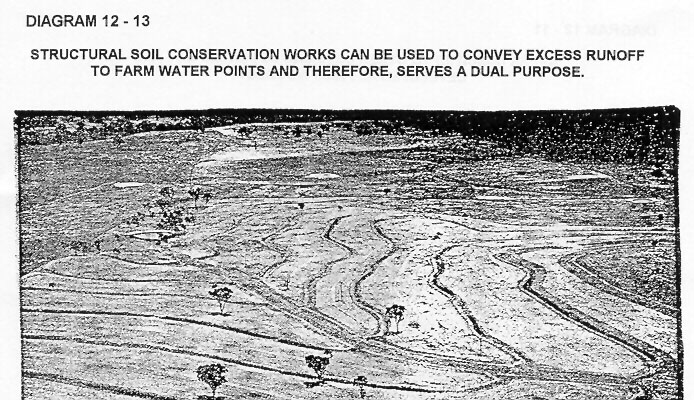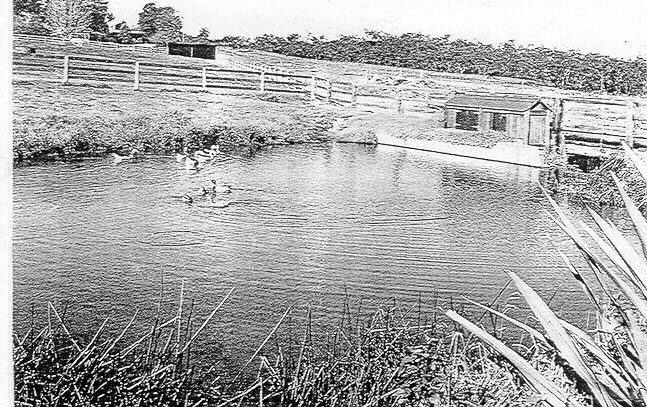WATER
IMPROVEMENTS AND SUPPLY
Water
availability is dependent on:
-
Seasonal conditions (eg
drought)
-
Existing water commitments
-
Increasing demands and
competition for water from urban and industrial users.
Production
return is affected by:
-
Inefficient systems
- Inappropriate practices.
WATER
IMPROVEMENTS AND SUPPLY
Water
availability is dependent on:
-
Seasonal conditions (eg
drought)
-
Existing water commitments
-
Increasing demands and
competition for water from urban and industrial users.
Production
return is affected by:
-
Inefficient systems
-
Inappropriate practices.
Environmental
impact of inappropriate water use and management include:
-
Salinity and drainage
problems
-
On and off farm land and
water degradation
-
Insufficient water for the
needs of the natural environment.
The
following factors should be considered when evaluating a property's
water supply:
-
Is the property drought
proof or does the current supply need improving?
-
Are there enough dams and
bores and are they in the right place?
-
Can the position of the
water pints result in erosion caused by stock tracks?
-
Are there better
alternatives?
Timber
camps should not be established above a water point otherwise the
supply may become polluted by the soil and manure washed into the
dam. Bogging and pollution of a dam can be avoided by fencing the dam
and pumping the water to a storage tank and troughs. This can be
achieved with a small windmill or small pump.
New
paddocks and a changed layout will require new water points. Where
reticulated supplies are available this may be achieved simply by
changing and moving the old lines. It is more difficult to provide
water to new paddocks when the farm relies exclusively on dams,
creeks and tanks. In such a situation it is better to pump the water
to a large central elevated tank (turkey nest) and reticulate the
water around the property by gravity.
An
adequate supply of water is important because Australia is a dry
country. A large part of a farm's water supply requires conservation
of surface water or the tapping of underground supplies. A good
supply of water, preferably town water, for the homestead, garden
farm, buildings and for adjacent small paddocks is an advantage.
Tank
water obtained from roof runoff can be used for domestic purposes.
WATER
NEEDS OF STOCK
Temperature,
type of pastures and humidity will determine the water needs of
stock. Sheep are more tolerant of saline water than cattle and
require less. Under normal summer conditions sheep running on dry
grass may be satisfied with 4.5 litres or less per day. On the other
hand in saltbush (pastoral) country watered by saline bores or wells,
sheep may consume more than 20 litres per day.
The
use of underground water for irrigation or homestead gardens is
influenced not only by salinity but also the nature of the soil,
drainage, climate and rainfall. Saline water can be used in light
soil with good underdrainage and some plants are more tolerant of
salinity than others (for example, native flowers). For example,
water containing more
than
50 grams total salts/litre is commonly used to water lucerne in the
Murray Basin where the soil drainage is particularly good.
The
effect of salt build up is mitigated by using drippers instead of a
spray or channel irrigation system. Hardness of water is generally
not a problem for plant growth. In fact, many plants grow better with
hard water.
Adequate
and well spaced supplies of water will greatly reduce trampling of
pastures, dust and erosion. Fencing lines should be arranged so that
each watering point is accessible to stock in 2 or more paddocks.
Dams should have easy access and be sited where they catch the best
available catchments. The ground in which they are sunk should be
reasonably impervious and free from drift veins that allow leakages.
Dams
such as above are quickly and easily excavated using modern
bulldozers and their relative construction cost is quite cheap. Their
value is small compared with the other components of the farm system
and therefore, are valued using the lump sum method.
WELLS
AND SUBARTESIAN BORES
Where
a satisfactory supply of underground water is available at reasonable
depth it may be tapped by either a well or bore. A well is
a
vertical shaft with a depth less than 30-40 metres whereas sub
artesian bores are deeper and usually have 100 mm to 150 mm casings.
Water
is raised using windmills (high capital cost but cheap running
costs), piping, submersible pumps (the most efficient), cylinder
pumps, jet pumps and foot valves with the use of an auxiliary engine
during calm periods. The engine and pump are plant or chattels and
therefore, not valued as part of the real estate.
4



